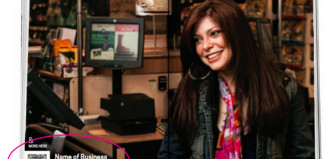Although living in Austin is much easier than living in many other places if you are part of a same-sex couple, there is still overt discrimination. Being gay, lesbian, bisexual or transgender, whether single or involved in a romantic relationship, can make people think twice about stopping to get gas, get a drink or use the restroom because of the risk that can be involved. It’s terrible to feel unsafe just because of the way you look or who you love. Societal norms can create a difficult environment for same-sex couples, and even going out for a cup of coffee with your partner can be taxing. Everyone should have the right to decide if they are comfortable with public displays of affection; we can all agree on this. But when two people in a same-sex couple are in agreement that they would like to have the opportunity to hold hands or kiss in public, the option is commonly not there for them because of the frequent negative reactions. I have talked to partners in same-sex couples who are, in theory, comfortable with the idea of showing affection to their partner in public, but because of public reaction and outcry have found themselves having to conform. They feel they need to change their actions in order to avoid a potentially harmful situation, whether it be verbal or physical.
Something routine that most of us take for granted, such as going out to dinner, can create an uncomfortable environment for same-sex couples. Wait staff can become awkward at the end of the meal when bringing the check to the table, because they are not sure who to give it to. Typically, a waiter will give the check to the man. Then the waiter is left to discriminate based on which person in a same-sex couple seems more masculine. This only stands to perpetuate the stereotype of the male being dominant, or the breadwinner, in heterosexual relationships, carrying over to same-sex couples. Even in places as liberal as Austin, there’s progress to be made.
Having to live a life where you’re frequently judged creates a turbulent existence for gay couples, and stress outside the home can create tumultuous relationships within the home. If you’re part of a same-sex couple, add the following to the typical stress that we all experience: constant discrimination, oppression, judgment, glares, and often being outcast by society. Most people carry their stress home with them, often taking it out on their loved ones. I have seen how this stress can play out in the lives of lesbian and gay couples.
When two women or two men are in a committed relationship, they often have to fight the stereotype: who holds the typical male role versus who holds the typical female role. Having probably been raised by straight parents, gay or lesbian partners often find themselves not knowing which role they are “supposed” to have. Who is the protector? Who is the one who is supposed to confront a home invader? When a lesbian or gay relationship is formed, it takes time to discover which role each person is more adept at playing, which partner is more emotional, who works better under pressure, etc. each partner will have to experience countless scenarios and situations to see who rises to each occasion. It can be hard to know on a one-on- one intimate basis what is going to work for each person. And as with any relationship, it takes time to discover each person’s role and what they will bring to it. It is best to keep in mind that success most often comes from putting aside the expectations of society and the expectations people put on themselves.
Ultimately, I do not think it is fair to ask people to change their opinions, but to simply respect, without judgment, lifestyles that differ from their own. Acceptance should be a part of everyone’s vocabulary.
The goal of any relationship between two people–romantic or not, gay or straight–is the same: mutual love and respect from our partner as well as patience and understanding. What we have to remember is that the definition of love (and life) that we have created in our mind is just that. Each person has a different view of love and of the world, and we cannot expect anyone else’s to look just as ours does.
I have found no difference in the dynamics that are brought into the therapy room by a heterosexual, homosexual, bisexual, or transgender person. The goals we all work to achieve are the same; the needs are always the same. The path you choose to take is the only difference.
Did You Know?
Massachusetts and Connecticut, two states that allow same-sex marriage, have very low divorce rates: 2.3 and 3.2 percent (CDC, 2007).
The American Academy of Pediatrics has found no evidence that the children of same- sex couples differ in their psychological, social and sexual development.
Same-sex marriage was first legalized in the Netherlands in 2001. Since then, nine countries have followed suit–Argentina, Belgium, Canada, Iceland, Sweden, Norway, Portugal, South Africa, Spain and the Netherlands.


































